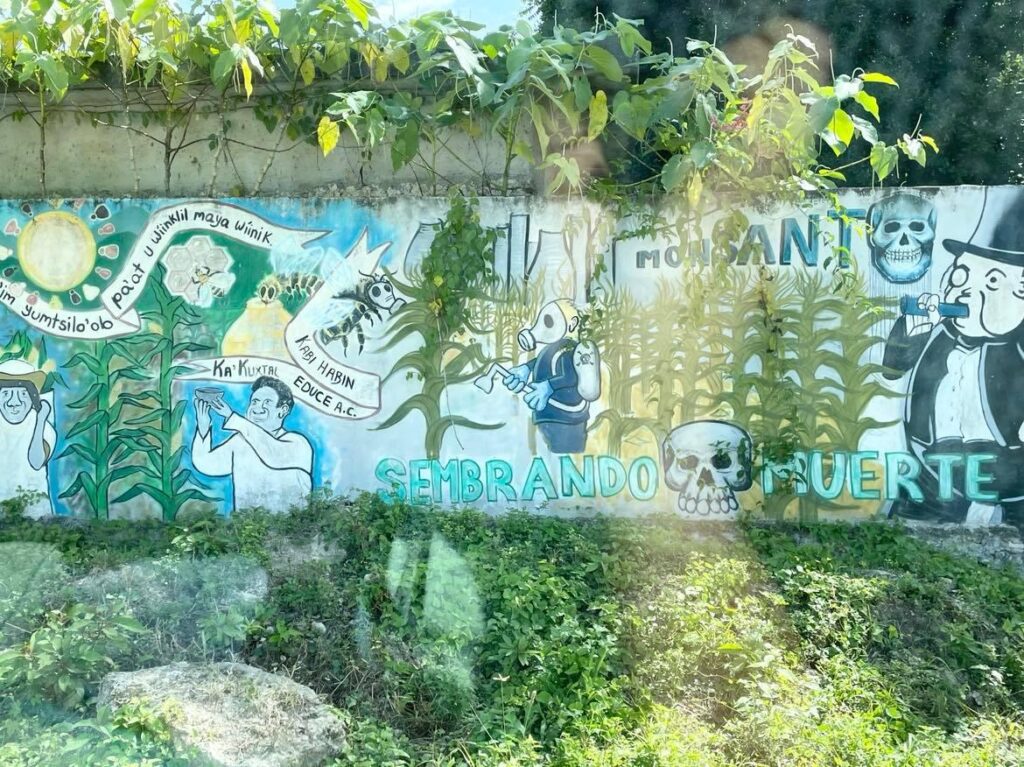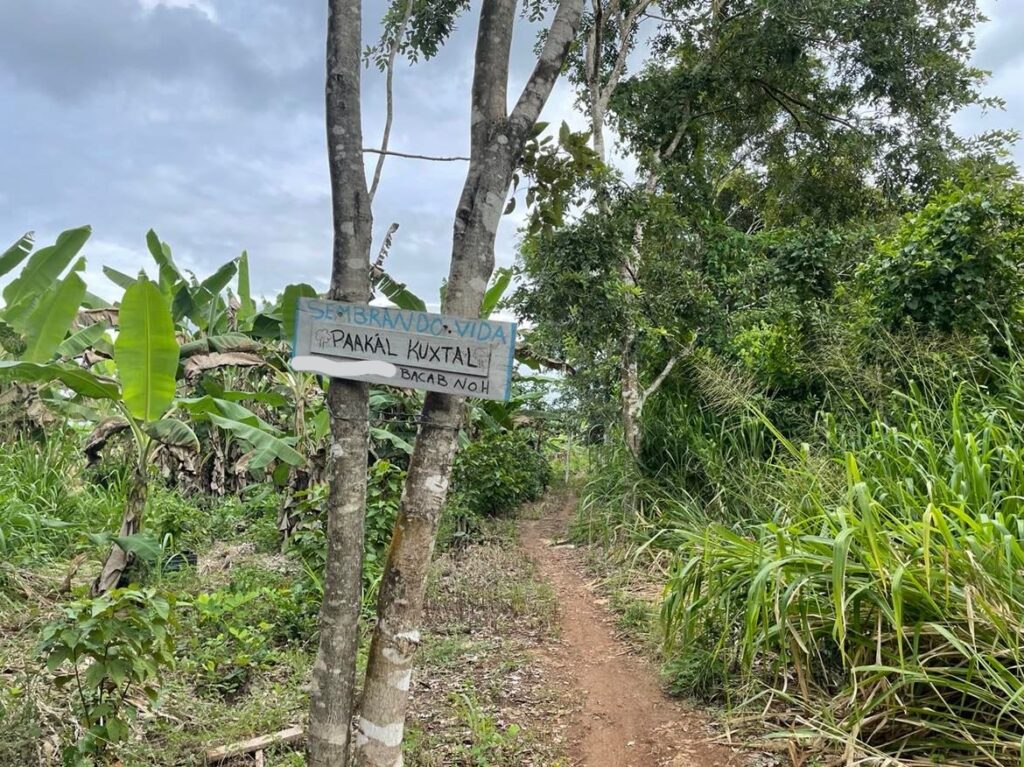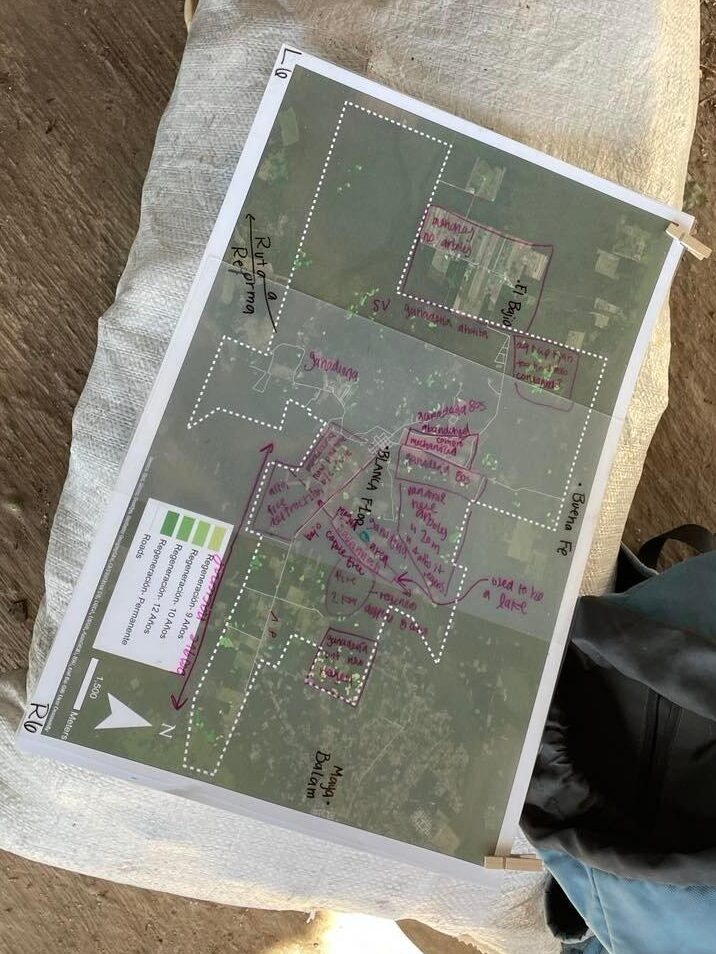Alana Rader 2020 Field Report
2020 CLAG Field Study Award
Opportunities and constraints of conservation discourse for forest regeneration in the Mexican Mesoamerican Biological Corridor
Abstract
The Mexican portion of the Mesoamerican Biological Corridor (MxMBC) hosts the largest tracts of seasonally dry tropical forest in Mexico alongside diverse and extensive land uses, despite regular environmental disturbances such as hurricanes. Following environmental disturbances in the region, the process of forest regrowth has been central to long-term tropical forest use, as biophysical patterns of regeneration are driven by the environmental tradeoffs inherent in land use. At the same time, land uses are governed by agricultural policies that have sought to incentivize land use intensification, privatization, and regulate field rotations, often in combination with conservation initiatives and set asides (Dobler-Morales et al., 2020; Padoch and Pinedo-Vazquez, 2010). Policies that center intensification may exclude specific community land use histories and spatio-temporal environments that together have defined continuous tradeoffs of land use and forest regeneration in the MxMBC. Analyzing these tradeoffs, and the degree to which Mexican agrarian policies align with them, provides the opportunity to understand how discourses of conservation, biophysical change, and community land use decisions interact with and influence material biophysical patterns of forest regeneration.
This research aims to understand how national policy discourse around forest regeneration and ecosystem processes in Mexico relates to that of ejido communities in the MxMBC, with implications for the state of continuous tradeoffs between land use and ecosystem processes through forest regeneration. A contemporary agricultural policy, Sembrando Vida, has been initiated across Mexico and is presented as an alternative to previous policies that centered agricultural intensification and privatization alone, with a multi-faceted goal of addressing poverty and ecosystem degradation through simultaneous food production and the restoration of proposed 1,000,000 ha of forest across Mexico. We analyze whether the new Sembrando Vida program is a continuation of a neoliberal environmentalism policy rhetoric centered in agricultural intensification, and therefore is misaligned with the reality of community land use histories in the MxMBC and the spatio-temporal patterns of forests, which together have depended on the tradeoff between land use and ecosystem processes through the process of forest regeneration.

Field Research
The aim of field research for this study is to understand the discourse around forest regeneration and conservation in ejido communities of the MxMBC, the degree to which this discourse aligns with that of the Sembrando Vida program, and the material implications for forest regeneration and biophysical processes. The communities of Blanca Flor and Laguna Kana were chosen for this research, based first on the fact that members of these communities are participating in the Sembrando Vida program (Figure 1), and second based on differing uses of communal forest lands (i.e. honey production and cash crop cultivation vs. semi-subsistence agriculture and forestry). The Conference for Latin American Geography (CLAG) Field Study Award was used to support 3-weeks of travel for myself and a research assistant to perform field research in Blanca Flor, the first of these two case study communities in Quintana Roo, Mexico, starting in the Fall of 2021. While in Blanca Flor we were able to meet with nearly 20 individual land users, visit numerous Sembrando Vida plots (Figure 2), and speak with the official government employee that oversees the Sembrando Vida program in the community of Blanca Flor.


Data collection in Blanca Flor consisted of semi-structured interviews facilitated through a community mapping exercise with men and women that have ownership over a plot of land, either through ejidal directive or through the Sembrando Vida program. We began each interview by presenting a large map of forest regeneration patterns following Hurricane Dean that I identified in Blanca Flor (Figure 3).
We discussed this map with study participants, to indicate areas of forest regeneration, and gain information on the land uses and community activities that existed in these areas before the process of forest regeneration began. Emerging topics and initial annotations regarding regenerating forest areas in Blanca Flor were revisited, referenced, and added to throughout the interview, serving as a building block for conversation points. By facilitating interviews through the mapping exercise, community members were able to engage with the maps to make their narratives of conservation, forest regeneration, and Sembrando Vida spatially explicit, by noting areas of land use change and areas of personal, political, and biophysical importance. Following field data collection in Blanca Flor, annotations and notes from the mapping exercise are being digitized into a community forest regeneration map for Blanca Flor. This map will be delivered to Blanca Flor during a CLAG supported field work trip scheduled to begin January 10, 2022.

Figure 3. Photograph of the mapping exercise used to facilitate semi-structured interview questions in Blanca Flor.
Next Steps
The CLAG Field Study award will be used to facilitate three weeks of field research to conduct semi-structured interviews through the community mapping exercise in the second community of Laguna Kana starting on January 10, 2022. Conducting interviews in both Blanca Flor and Laguna Kana will facilitate a comparison of dominant community land uses and forest regeneration discourses between communities that are participating in the Sembrando Vida program. Interview recordings from both Blanca Flor and Laguna Kana will be transcribed and analyzed alongside Sembrando Vida policy documents in a discourse network analysis to better understand the complex relationships between community land use decisions, ideas around forest conservation and recovery, and material patterns of forest regeneration that maintain ecosystem processes in this important human occupied tropical landscape of the MxMBC.
Acknowledgements
This field research would not have been possible without the support and collaboration of my supervisors and co-authors, Dr. Laura Schneider, Dr. Birgit Schmook, and Dr. Robin Leichenko, as well as for the support in data collection by Jorge Castelar and the Puc Kauil family of Blanca Flor. Financial support for this research is provided by the Conference of Latin American Geography’s Field Study Award, and for the second phase of research in Laguna Kana, will be supplemented by financial support from the Society of Women Geographers.
Works Cited
Dobler-Morales, C, Roy Chowdhury, R., Schmook, B. (2020). Governing intensification: the influence of state institutions on smallholder farming strategies in Calakmul, Mexico. Journal of land use science, 15(2 – 3): 108 – 126.
Padoch, C., Pinedo-Vasquez, M. (2010). Saving slash-and-burn to save biodiversity. Biotropica, 42(5): 550 – 552.
For more details see the full report.


















